Microworlds
One of Seymour Papert’s many ideas that I love is that of "microworlds" - which I believe can be summarized as: a self-contained object or environment you can fully learn and comprehent by reasoning about it and experimenting in it.
Seymour Papert’s Microworlds
See also Seymour Papert, where I’ve got more notes.

Here’s a quote containing the term from Seymour Papert’s 'Microworld': An Educational Utopia by By Charlie Euchner - May 18, 1983 (EducationWeek)
In the process of programming, Mr. Papert said, students create their own 'microworlds.' The microworld involves a physical object—in this case, the turtle—that a student can use to play with and to become familiar with larger numbers and the ideas that go with them.
By the way, a great free, modern version of LOGO is KTurtle, part of the KDE project. KDE has an incredible collection of software, including an "Education" category: https://apps.kde.org/categories/education/
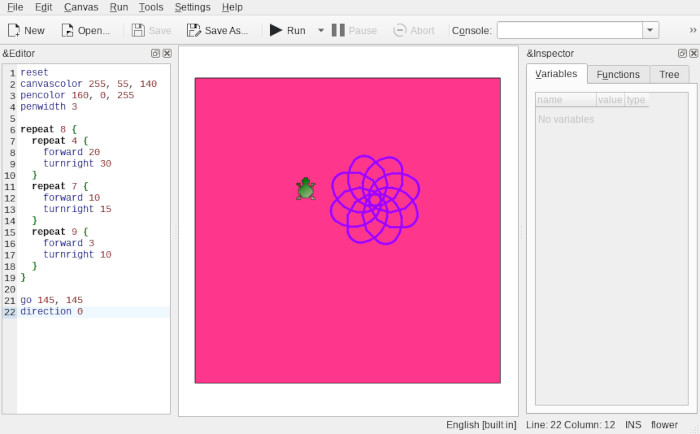
Microworlds, Mr. Papert said, enable children to learn much faster. "Why is it that children have to do 98,000 repetitions of this?" Mr. Papert said, pointing to an addition problem. "One reason is that they don’t know what they’re looking at. They need an object to think about other things with."
In other words, we build up intuition much faster with tangible, interactive, "tactile" things than with words and numbers alone.
Mr. Papert contends that the ease with which students grasp LOGO and their own microworlds eventually could lead to a kind of educational utopia.
A system you can learn while you’re in that system very much describes most video games. In fact, I think in-game tutorials prove beyond a doubt that kids (and adults!) quickly learn an environment from within that environment when it’s self-explained and self-explorable.
Randall Smith’s ARK
I learned about ARK in a really fun and interesting Stanford lecture/talk by David Ungar (wikipedia.org) titled Self and Self: Whys and Wherefores.
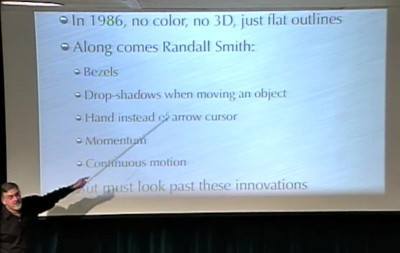
ARK is Randy Smith’s Alternate Reality Kit and it’s one of those mind-blowingly cool things from Xerox PARC in the 1980s that, well, we expect to have come from Xerox PARC in the 1980s.
Ungar’s talk features video clips of Smith demoing ARK. Smith’s presentation style is very understated, relaxing, and fun. And my ears perked up when he said, "It’s intended to be a world of parts of pieces that the user can modify to assemble their own microworlds."
In the presentation, ARK is shown simulating an orbiting body. The simulation is running the whole time as Smith manipulates the rest of the interface. The interface is completely interactive, and every action has a visual counterpart. It’s quite magical.
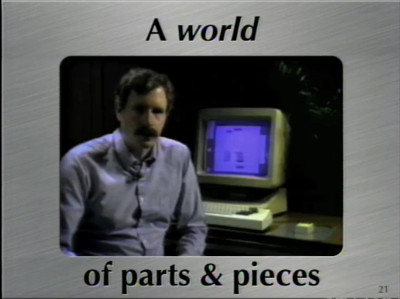
Several clips demonstrate the core ideas in ARK. First, that everything in the system is represented visually. There are drop-shadows and the little hand cursor actually grabs things when you click on them. Even messages between objects are represented visually.
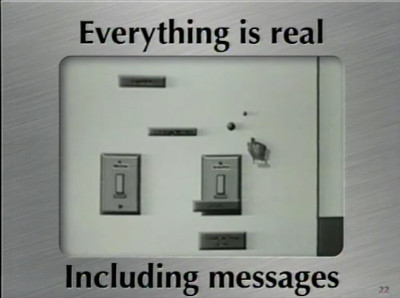
The next part is subtle, but very significant. Because it’s a visual interface and everything is treated as real, errors can be handled more elegantly than text-based systems. When you try to drag an incompatible item over another in ARK, it doesn’t throw an error, it simply let’s the item "fall" to the canvas below. Ungar makes some gentle jabs at the current state-of-the-art in programming here.
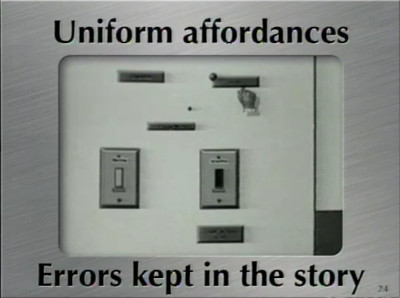
And here’s another thing that made me take note, and should be a fun aside for fellow programmers. Because one of ARK’s principles is to make a tangible system for learning and experimenting, a prototypal interhitance system was developed. You don’t make an intangible class and then instantiate objects, you simply copy existing prototype objects from a "warehouse" to make new ones.
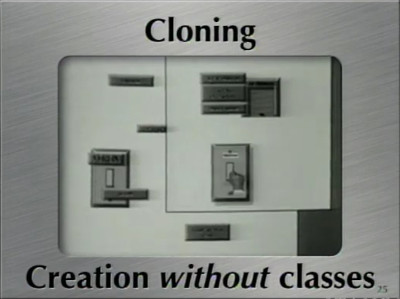
Ungar points this out in a bullet point later:

If the prototype system sounds familiar, that’s because JavaScript uses it!
Brendan Eich has specifically mentioned David Ungar and Randall Smith’s Self language (wikipedia.org), which is prototype-based and clearly a product not just of Smalltalk, but also ARK.
Eich on his famously hasty design of JavaScript:
"…I’m happy that I chose Scheme-ish first-class functions and Self-ish (albeit singular) prototypes as the main ingredients."
and
"I still think of it as a quickie love-child of C and Self. Dr. Johnson’s words come to mind: 'The part that is good is not original, and the part that is original is not good.'"